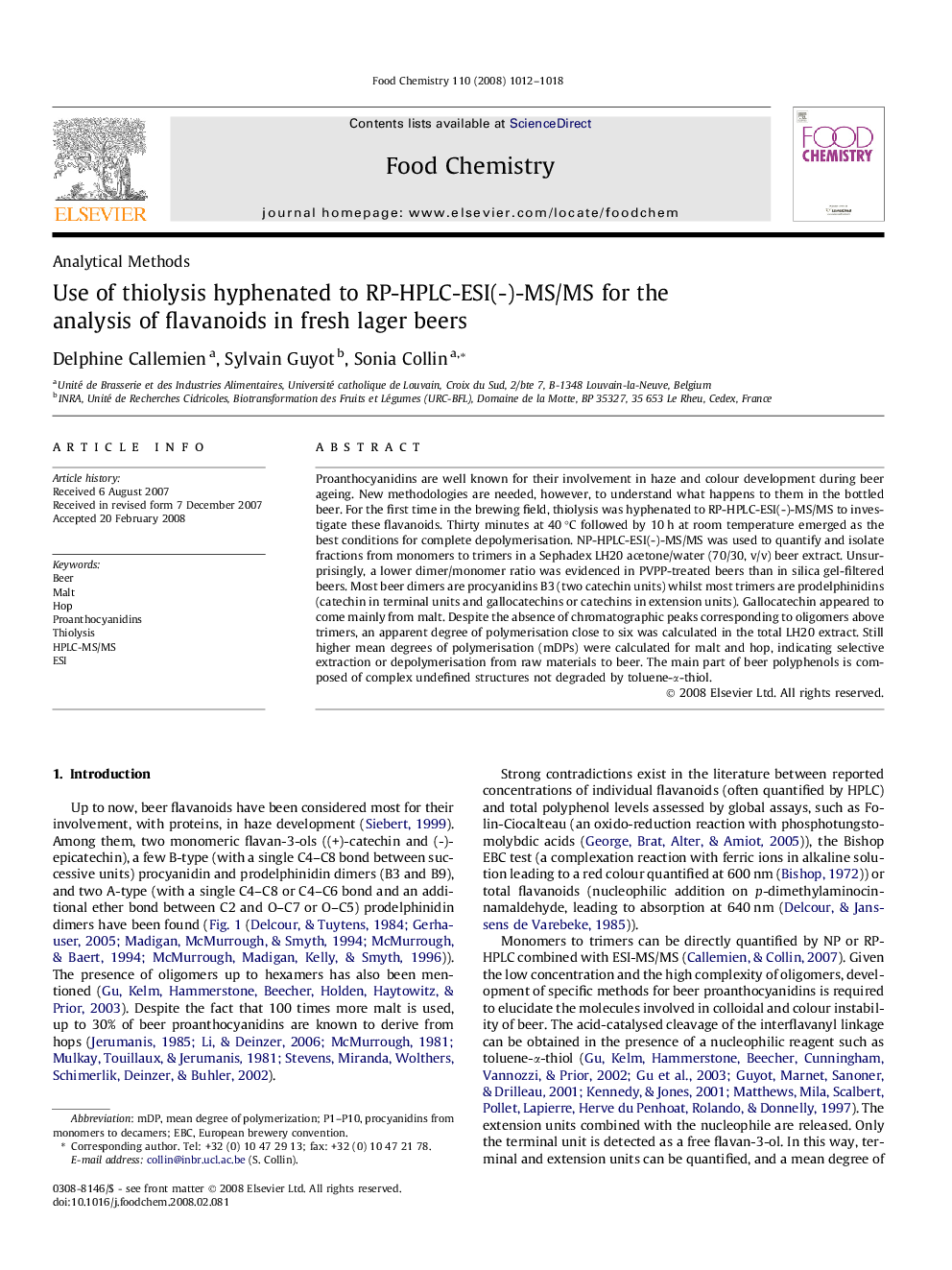| Article ID | Journal | Published Year | Pages | File Type |
|---|---|---|---|---|
| 1188186 | Food Chemistry | 2008 | 7 Pages |
Proanthocyanidins are well known for their involvement in haze and colour development during beer ageing. New methodologies are needed, however, to understand what happens to them in the bottled beer. For the first time in the brewing field, thiolysis was hyphenated to RP-HPLC-ESI(-)-MS/MS to investigate these flavanoids. Thirty minutes at 40 °C followed by 10 h at room temperature emerged as the best conditions for complete depolymerisation. NP-HPLC-ESI(-)-MS/MS was used to quantify and isolate fractions from monomers to trimers in a Sephadex LH20 acetone/water (70/30, v/v) beer extract. Unsurprisingly, a lower dimer/monomer ratio was evidenced in PVPP-treated beers than in silica gel-filtered beers. Most beer dimers are procyanidins B3 (two catechin units) whilst most trimers are prodelphinidins (catechin in terminal units and gallocatechins or catechins in extension units). Gallocatechin appeared to come mainly from malt. Despite the absence of chromatographic peaks corresponding to oligomers above trimers, an apparent degree of polymerisation close to six was calculated in the total LH20 extract. Still higher mean degrees of polymerisation (mDPs) were calculated for malt and hop, indicating selective extraction or depolymerisation from raw materials to beer. The main part of beer polyphenols is composed of complex undefined structures not degraded by toluene-α-thiol.
